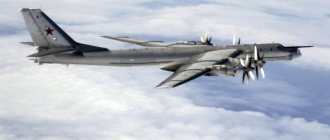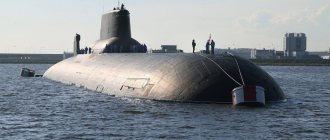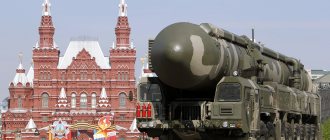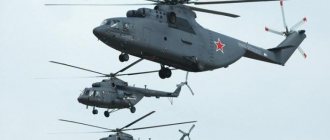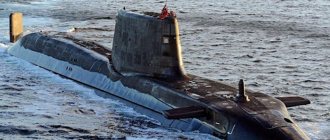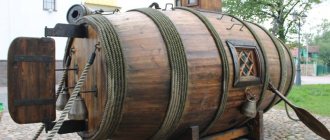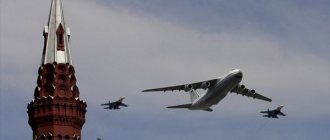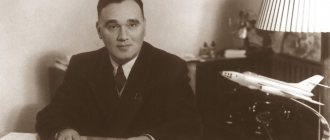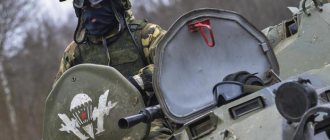Considering all the stages of the creation of the Russian armed forces, it is necessary to dive deeply into history, and although during the time of the principalities there is no talk of the Russian empire, and even less of a regular army, the emergence of such a concept as defense capability begins precisely from this era. In the 13th century, Rus' was represented by separate principalities. Although their military squads were armed with swords, axes, spears, sabers and bows, they could not serve as reliable protection against outside attacks.
The unified army begins to exist only during the time of Ivan the Terrible. During all this time, many changes have occurred both in the formation of the composition and in its management, but the decisive, turning-point reforms for history will remain the transformations of Ivan IV, Peter I, Dmitry Milyutin, as well as modern reforms that are at the completion stage.
How did the internal structure of Russian troops arise?
In the second half of the 15th century, the Moscow state took shape centrally.
Only then did it become possible to carry out competent organization in the military formations of the Russian army. We can say that it was in those ancient times that the modern armed forces of the Russian Federation were born; the history of their creation and reforms constitute a whole “chronicle”. The squads of appanage principalities were replaced by military formations made up of persons of noble origin. There is a number (though unconfirmed) of over two hundred thousand military professionals.
The army weapons of that time were only cold weapons: bows and swords, clubs and axes. In case of a long siege, throwing devices were used. Later, squeaks came into use - long-barreled “firearms”, and even later the army armed itself with the first artillery cannons.
In the creation of the Russian Armed Forces, military reforms carried out throughout their entire glorious “biography” were of great importance. The first important step in this was taken by Tsar Ivan the Terrible, under whom centralized military control was introduced. At the same time, the creation of rifle regiments was noted, and the existing artillery became a separate type in the troops.
According to the tsar's decree, a prototype of the current Russian special forces was created, so to speak - special-purpose Cossack guard units, which were charged with the duty of detecting in time, as well as neutralizing enemy patrols and detachments.
History of the Russian Army
- home
- Magazine sections
- Historical facts
- History of the Russian Army
Alexey Barabanov 02/22/2015
Alexey Barabanov 02/22/2015
The army has been an indispensable attribute of states for quite a long time. The army was assigned the role of an organized defensive force. At the same time, the army was also used to expand territory and conduct various military operations. The development and formation of the Armed Forces is inextricably linked with the history of the Russian state.
The army, just like any organizational structure, especially a social structure, has its own characteristics and traditions.
Until the 9th century, the Slavs often used sabotage tactics of war. The Slavs not only carried out raids, but also participated as mercenaries in many wars on the side of Byzantium. The Slavs did not have cavalry. The Slavs were influenced by different peoples, but mainly they were Avars, Byzantines, and Varangians. According to foreign chronicles, the Eastern Slavs did not have armor, they were armed only with spears (we are talking about sulitsa), small shields, axes of the Slavic type, it can be assumed that many had bows. In addition, the Byzantines describe only individual East Slavic tribes, and the weapons subsequently varied greatly in different regions of Rus'.
In the 9th-13th centuries, the main part of the princely army was the squad. It had a clear classification of people according to their level of experience and professionalism. It was divided into the older one, which included not only the Slavs, but also various Scandinavians who contributed to the formation of the ancient Russian army, and the younger one, which was divided into three subgroups: youths (military servants, who could be people of various nationalities), gridi (bodyguards prince) and children's (children of senior warriors). The system of official position is also known: after the prince came the governors, then the thousanders, centurions, and tens. By the middle of the 11th century, the senior squad turned into the boyars. The exact number of squads is unknown, but it was small. For example, in 1093, the Grand Duke of Kyiv Svyatopolk had 800 youths. In addition to the professional squad, free community members from the common people and the urban population could take part in wars. In the chronicles they are mentioned as warriors. The number of such a militia could be several thousand people. It happened that women took part in campaigns on an equal basis with men. People living on the border combined crafts and agriculture with the functions of border troops. Since the 12th century, cavalry has been actively developing, which is divided into heavy and light. The Russians were not inferior to any of the European nations in military matters. Sometimes foreigners were hired to serve. Most often these were Normans, Pechenegs, then Cumans, Hungarians, Berendeys, Torques, Poles, Balts, and occasionally even Bulgarians, Serbs and Germans. The bulk of the army was infantry. But by that time there was already cavalry formed to protect against the Pechenegs and other nomads. There was also a good fleet, consisting of rooks.
The tactics used were different, although not very diverse. A common battle formation was the wall. It could be covered from the flanks by cavalry. They also used a “regimental row” - a three-tier battle formation, divided into a center and flanks.
The weapons varied. Swords were mainly used by senior warriors and gridi. Two types of battle axes were very actively used - Varangian axes with long handles and Slavic infantry hatchets. Impact weapons were widespread - maces with bronze or iron heads. Flails, but as an additional weapon, not the main one. In the 10th century, sabers, more effective for fighting horse nomads, took root in Southern Rus'. Of course, various knives were used; in the people's militia, in case of poverty, cheap homemade weapons were also used - in particular, a pitchfork, a flail and a wooden grip, which is sometimes incorrectly called a spear. There were several types of spears. "Armor-piercing" infantry; cavalry; from the street; anti-horse spears. Everyone knew how to use bows, since they are necessary for hunting. Crossbows were also used, but much less frequently. Throwing weapons are known in Rus' no later than the 10th century.
The main protective equipment was shields, teardrop-shaped or round. Helmets in Rus' have always traditionally been dome-shaped, with only a few exceptions. The helmets were equipped with a cap to protect the face and an aventail to protect the back of the neck. Chain mail was used as armor, which was widespread already in the 10th century. Later, plate and scale armor appeared and became more rare.
In Muscovite Rus', for various reasons, the main one of which is the influence of Asian peoples (especially the Mongols), the importance of cavalry increases sharply. The entire squad becomes mounted and by this time is gradually transformed into a noble militia. In military tactics, the mobility of cavalry and its use of deceptive techniques increased. That is, the basis of the army is quite numerous noble cavalry, and the infantry fades into the background. Firearms in Rus' began to be used at the end of the 14th century. The exact date is unknown, but it is believed that this happened under Dmitry Donskoy no later than 1382. With the development of field firearms, heavy cavalry lost its importance, but light cavalry could effectively resist it. At the end of the 15th century, they moved from the feudal militia to a standing all-Russian army. Its basis was the noble local cavalry (sovereign servants), united in regiments under the command of the grand ducal commanders. But at first they did not have firearms. It was used by gunners (an ancient name for a Russian artilleryman) and pishchalniks (infantry armed with firearms - pishchals), the first information about which dates back to the beginning of the 15th century. At the same time, the Cossacks were formed.
For many years, the Russian people constantly had to wage armed struggle, defending their lands from foreign invaders. In the period from the XIV to the XVII centuries. There is practically not a single year of peace when the borders of the Russian state would be calm and there would be no need to repel the enemy. Therefore, the state was in constant readiness for war, and its structure met this requirement. All social groups and classes were divided into those who fought the enemies, and those who supported the fighters financially or spiritually. According to domestic historians, the Moscow state in the 16th century. had an army of 150-200 thousand professional soldiers. In the most serious and important military campaigns, militia were added to the combat regiments. It consisted of townspeople and peasants, usually poorly armed and unsuitable for combat. Militias were mainly used to guard convoys, build roads, and perform engineering work during the siege of enemy fortresses. In such campaigns, the total number of troops could be up to 300 thousand people.
The basis of the armed forces of the Russian state during this period were noble detachments. For military service, the nobles received land holdings with peasants (estates) from the Moscow sovereigns.
A clear system for collecting military personnel was developed. At the reviews, where their readiness for military action was checked, each nobleman was obliged to appear fully armed, having two horses - a fighting and a spare, and one or more armed servants. In case of failure to appear at the review, being late for a campaign, arriving poorly equipped or without the required number of armed servants, a fine or reduction in the size of land ownership was imposed. Throughout their lives, nobles were required to perform military service; they were all considered service people from generation to generation. Over many years of military training, they acquired high fighting qualities and the skills of professional warriors. In addition to serving people from the nobility, a considerable part of the armed forces of the Moscow state were hired service people who received not estates, but a cash salary. Among them, the most numerous were the Streltsy - infantry armed with arquebuses (matchlock guns) and battle axes (berdysh). The first permanent units of the Streltsy were formed under Tsar Ivan IV the Terrible in 1550 after the second Kazan campaign. By decree of the tsar, a detachment of Russian foot troops numbering 3 thousand people was established. The detachment consisted of six “articles” (regiments) of 500 archers each, which were divided into hundreds of archers. The Streltsy army was formed from townspeople. The service was lifelong and hereditary. For military service, the archers received cash and grain salaries, as well as land plots near cities. This is how a permanent army appeared in Rus'. Subsequently, the number of Streltsy troops grew rapidly, and by the end of the 16th century. There were already 20-30 thousand archers by the middle of the 17th century. - about 50 thousand people. The Streltsy army proved itself well in the siege and defense of fortresses; not a single garrison of a Russian city could do without Streltsy. In campaigns and battles, the Russian army improved its organizational structure. From about the 14th century. they began to divide it into shelves. To participate in minor military operations, the army was formed from three regiments. In major battles it consisted of five regiments: large, advanced, right arm, left arm and guard. The number of regiments varied from several hundred to several thousand soldiers (depending on the scale of the campaign). The role of the Ministry of Defense in the Moscow State was played by the Rank Order, which was in charge of appointment to positions, the formation of troops and fortress garrisons, as well as the provision of land to servicemen.
Historians note that in pre-Petrine times, the Russian system of military organization and command and control was well adapted to solving the problems facing it. The Russian government, trying to keep up with Europe, carried out military reforms, making the greatest possible efforts in this direction and never sparing any expense.
Russian firearms were represented by various cannons and arquebuses. At first, guns were imported from Europe, but at the end of the 15th - beginning of the 16th centuries, we organized our own large-scale production of firearms. Melee weapons have not lost their importance, since reloading firearms took considerable time. First of all, sabers and reeds were used; pernachs and some other weapons were also used. Protective equipment almost lost its role, but was still retained due to hand-to-hand combat. To protect the head, they used helmets and shishaks, in particular, erichonkas, as well as iron hats.
In 1632-1634. In the Moscow state, regiments of a new system appeared, that is, soldier, reiter and dragoon regiments, formed according to Western European models. Several soldier regiments were formed from Russian people, in which the officers were foreigners who were in Russian service. Each regiment consisted of up to 1,750 people, of which approximately 1,600 were Russians and 150 foreigners. The regiment was divided into eight companies. A reitar regiment (heavy cavalry) numbering about 2 thousand people was formed from Russian people. This regiment consisted of 14 companies of 125-130 people each. By 1657, 11 Reiter and soldier regiments were formed in Russia.
The first three-masted ship "Frederik", built in Russia according to European standards, was launched in Balakhna in 1636, during the reign of Tsar Mikhail Fedorovich.
The army reform was carried out under Peter the Great. In 1698-1699, the rifle regiments were disbanded, and regular soldiers were formed instead. In preparation for the war with Sweden, Peter ordered in 1699 to carry out a general recruitment process and begin training recruits according to the model established by the Preobrazhentsy and Semyonovtsy. At first, he formed an officer corps from his friends who had previously been members of the “amusing regiments,” and later from nobility.
Gradually, the regiments of the new system replaced the old army. These regiments had almost all the features of a regular army, they were divided into companies, the procedure for appointment to officer positions was determined, and drill and tactical training was conducted with the personnel. However, after the campaign, the soldiers and some of the officers went home, their weapons were surrendered, i.e. it was not yet a completely regular army. Later, under Peter I, the regiments of the new system formed the basis of the new army.
Peter I introduced a new army recruitment system. It began to be carried out on the principle of recruitment, when 10 - 20 peasant households, by lot, supplied one person for lifelong military service. The introduction of conscription allowed Peter I to significantly increase the number of standing troops. The officer corps of the Russian army consisted of nobles; for them, public service was mandatory and lifelong. To receive an officer's rank, a nobleman had to serve as a soldier in the Guards regiments - Preobrazhensky or Semenovsky.
In 1687, Peter I created from the amusing army the first two regular regiments of the Russian army - Preobrazhensky and Semenovsky. They began to be called the guard on May 30, 1700, the Tsar’s birthday.
By 1917, there were 40 historical regiments in the Russian army. They preserved military traditions and embodied the glory of Russian weapons. It was a great honor for any soldier or officer to serve in them.
The officers always looked at the regiment as a second family, and cherished its honor as if it were their own. Any violation of the code of honor brought disgrace to the entire unit.
Until 1917, officers were also prohibited from being members of political parties.
There were a number of unwritten rules according to which a guard officer had to sit in the theater no further than the seventh row of the stalls, visit only the best restaurants and travel in first-class carriages. When a guardsman occupied a table in a St. Petersburg restaurant, he was obliged to demand a bottle of good champagne for no less than 12 rubles.
Each officer handed over silver cutlery to the regiment, which was used during regimental meetings and holidays. For special services, his name was engraved on it, so that all subsequent generations of officers would remember the comrades who served in the regiment and glorified it.
A new organizational structure of the army was established, and unified states were introduced. The Russian armed forces at this time were divided into field (infantry, cavalry, artillery, engineering troops), local (garrison troops and land militia) and irregular (Cossacks and steppe peoples) troops.
Garrison troops were stationed in large cities. They served to maintain internal order, and also served as reserve troops and reserves for the field army.
The Government Senate and the Military Collegium subordinate to it (the prototype of the Ministry of Defense) began to be in charge of all matters relating to the army.
After the conquest of the Azov fortress in 1696, the boyar duma discussed Peter's report on this campaign and decided to begin the construction of the Navy on October 20, 1696. This date is considered the official birthday of the regular Russian Navy, whose ships were built at the shipyards of the Voronezh Admiralty. The ships were built with the help of European engineers, and by 1722 Russia had a good fleet of 130 sailing and 396 rowing ships.
Naval officers came from the nobility, sailors were recruits from the common people. The term of service in the navy was lifelong. Young officers were trained at the School of Mathematical and Navigational Sciences, founded in 1701, and were often sent abroad for training and practice. Foreigners were often hired for naval service.
The creation of a regular army and the transition to a new organization of its combat training predetermined Russia's victory in the Northern War (1700-1721). In 1722, a system of ranks was introduced - the Table of Ranks.
The armament was also changed to a European style. The infantry was armed with smoothbore rifles with bayonets, swords, cutlasses, and grenades. Dragoons - carbines, pistols and broadswords. The officers also had halberds, which were not the best weapons for battle. The uniform was similarly changed.
Interesting fact: one of the decrees of Peter I introduced a special style of soldier’s uniform. According to this decree, buttons had to be sewn on the front side of the sleeves. The reason for the introduction of such a “luxurious” style was not at all the desire for ostentatious splendor, it was much more prosaic. Most of the soldiers were former peasants, with an ingrained habit of wiping their mouths with their sleeves after dinner. These buttons were supposed to help keep the cloth intact.
The improvement of the Russian armed forces continued under the reign of Catherine II. At this time, the Military Collegium ceased to depend on the Senate and gradually turned into the Ministry of War. The ground army of that time consisted of 4 guards, 59 infantry regiments and 7 ranger corps. The size of the standing army increased to 239 thousand people. The talented commander Pyotr Aleksandrovich Rumyantsev introduced new tactics of warfare. He divided the infantry into small squares (infantry battle formation in the form of one or several squares or rectangles) of 2-3 thousand people. The infantry was followed by the cavalry. Artillery was placed in front, on the flanks or in reserve. This made it possible to quickly rebuild troops in accordance with the combat situation. Alexander Vasilyevich Suvorov made a significant contribution to the troop training system. In 1810, on the initiative of A. A. Arakcheev, military settlements began to be used.
The military reforms of Peter I, the modernization of the armed forces and their management during the time of Catherine II brought Russian troops many victories both in individual battles and in long campaigns (Russian-Turkish wars of 1768-1774 and 1787-1791).
The unity of the army with the people, which characterizes Russian society, was clearly demonstrated during the Patriotic War of 1812. It was the unity of the entire people, who stood up to defend their native land, that helped defeat Napoleon. Napoleon's army could not win the war waged by the entire Russian people. The Russian spirit defeated French training and discipline. The militia refused to drink vodka before the battle, and the partisans caused panic among the conquerors. National participation in the war and the heroism of the Russian army, the leadership talents of M.I. Kutuzov and other generals, the general patriotic upsurge were the reasons for the victory over Napoleon.
A major military reform of the Russian armed forces was carried out after the defeat in the Crimean War (1853-1856), which revealed Russia's military lag behind European countries. The Crimean War of 1853-1856 showed the shortcomings of domestic weapons. Namely, with the spread of steam engines, steamships were invented, of which there were only 16 in the Russian fleet; and mass production of rifled weapons became possible, but in Russia its quantity was also insignificant. The reform was carried out under the leadership of Minister of War Dmitry Alekseevich Milyutin, who saw the main task of military reforms in keeping the army size to a minimum in peacetime, and in wartime to a maximum due to trained reserves. From 1864 to 1867, the number of standing troops decreased from 1 million 132 thousand to 742 thousand, and the military reserve increased to 553 thousand people.
15 military districts were created on Russian territory. As a rule, the governor general was appointed commander of the district troops. Each district was simultaneously a body of military command and military administrative structure. This made it possible to quickly command troops and quickly mobilize them. With the creation of districts, the War Ministry got rid of a wide range of responsibilities that were now performed by commanders; only those management issues that were important for the entire army remained under its jurisdiction. The General Staff was created.
In 1874, a new Charter on military service was approved. Since that time, army recruitment has been abolished in Russia and universal military service has been introduced, which extended to the male population from the age of 21 of all classes and estates. The total service life was set at 15 years: 6 years of which were spent in active military service, and 9 years in reserve. Particular attention was paid to improving the professional training of officers. Literacy among soldiers was recognized as essential, so teaching them to read and write became mandatory. The network of special military educational institutions has expanded. An important part of the reforms in the army was its rearmament. Transition to rifled breech-loading weapons. In 1868, the American Berdan rifle was adopted, in 1870 - the Russian Berdan rifle No. 2. In 1891 - the Mosin rifle. In 1861, production of armored steam ships began, and in 1866, submarines. By 1898, the Russian navy, consisting of the Baltic, Black Sea fleets, Caspian and Siberian flotillas, had 14 battleships, 23 coastal defense battleships, 6 armored cruisers, 17 cruisers, 9 mine cruisers, 77 destroyers, 96 torpedo boats, 27 gunboats boats. Russian-Turkish War 1877-1878 became a serious test of the effectiveness of the ongoing reforms. A few years after this war, D. A. Milyutin recalled: “My most notorious enemies had to admit that never before had the Russian army come to the theater of war so well prepared and equipped.”
At the beginning of the 20th century, the active development of military equipment continued. In 1902, armored cars appeared in the Russian army, in 1911 - military aviation, in 1915 - tanks. But officials preferred to use foreign developments rather than support Russian inventors. Therefore, many successful projects, such as the Porokhovshchikov tank and machine gun, were not used. However, for example, Sikorsky aircraft were produced and were no worse than foreign ones.
In the history of the Russian armed forces there were not only victories, but also defeats, such as in the Russo-Japanese War of 1904-1905. Due to the intensification of the struggle for the division of spheres of influence between Russia and Japan in China, war turned out to be inevitable. Japan was much better prepared for it. Despite the heroism and valor of Russian soldiers and sailors, the war was lost.
After the defeat in the Russo-Japanese War, the government of Nicholas II took measures to revive the combat power of the Russian armed forces. This was forced by the difficult international situation. The First World War was approaching. Germany declared war on Russia, and after it on France. Within days of this, the main European states entered the war. The First World War became another heroic and at the same time tragic page for the history of Russia and its armed forces.
The October Revolution of 1917 destroyed the existing state structure of Russia and eliminated the armed forces. In the very first months, the Government of the Republic of Soviets had to create new armed forces, taking into account changes in the country's social structure, external threats and material capabilities.
The officer cadres of the Russian Imperial Army formed the basis of the armies of the White movement, in which many units of the Russian Imperial Army were revived. On January 8, 1919, as a result of the unification for a joint fight against the Bolshevik government, the Volunteer Army and the army of the All-Great Don Army were formed.
In the first months of Soviet power, its armed support was the Red Guard (armed detachments of workers that were created on a voluntary basis since March 1917). By the beginning of 1918, there were about 460 thousand people. The small, poorly trained Red Guard could not resist the invasion of German troops. This circumstance forced the Soviet government to begin recruiting a standing army. In January 1918, decrees were adopted on the creation of the Workers' and Peasants' Red Army (RKKA) and the organization of the Workers' and Peasants' Red Fleet. The army and navy were created on a voluntary basis. In February 1918, soldiers of the Red Army and sailors of the Baltic Fleet had to repel the onslaught of German troops. To commemorate the mass entry of volunteers into the Red Army to defend the Fatherland and the courageous resistance of the Red Army detachments to the German invaders, February 23 began to be celebrated as the Day of the Soviet Army and Navy, and since 1992 - as the Day of Defenders of the Fatherland.
During the Civil War, the weapons of the Red Army were no different from the weapons of the White Army. After the formation of the USSR, first on the basis of foreign models, and later on our own developments, further development of firearms, armored vehicles, aviation and navy took place.
The pre-revolutionary experience of the Russian army was used in the construction of new armed forces. After a series of reorganizations, unity of command and the compulsory nature of military service were restored. In 1925, the Law “On Compulsory Military Service” was adopted, and in 1939 the Law “On General Military Duty” was adopted. Military ranks and military awards were introduced in the army, and military discipline was strengthened. The international situation required the constant strengthening and improvement of the armed forces. World War II was approaching. Under these conditions, the Soviet government took measures to strengthen the country's defense capability. The number of armed forces grew steadily: in 1935 - 930 thousand, in 1938 - 1.5 million and by the beginning of 1941 - 5.7 million. The organizational structure of the army was improved. Steps were taken to technically re-equip the armed forces.
Great Patriotic War 1941-1945 became the greatest test of the ability of the USSR Armed Forces to defend the country's independence. During this period, the domestic military school put forward a number of talented military leaders (G.K. Zhukov, K.K. Rokossovsky, N.F. Vatutin, A.M. Vasilevsky, I.S. Konev, etc.), who skillfully carried out military operations, which led to the defeat of a persistent and well-armed enemy. Victory in this war once again demonstrated to all humanity the inexhaustible capabilities of the Soviet people and their Armed Forces in defending their Fatherland. The Great Patriotic War led to a significant development of military equipment. After her, Marshal G.K. Zhukov began to form special forces sabotage units.
In the mid-50s. The armed forces were equipped with nuclear missile weapons and other new types of military equipment. In 1960, a new branch of the Armed Forces was created - the Strategic Missile Forces.
Before the collapse of the Soviet Union, the Armed Forces of the USSR included the following branches: Strategic Missile Forces (Strategic Missile Forces), Ground Forces (SV), Air Defense Forces (ADF), Air Force (Air Force), Navy (Navy). In addition, they included the rear of the Armed Forces, headquarters and civil defense troops. The highest leadership of the country's defense and the Armed Forces of the USSR was carried out by the Central Committee of the CPSU and the highest bodies of state power (the Supreme Council of the USSR and the Council of Ministers of the USSR). Direct leadership of the USSR Armed Forces was carried out by the USSR Ministry of Defense.
The political confrontation between the USSR and the USA during the Cold War contributed to the development of advanced weapons of mass destruction and their production in huge quantities to ensure superiority in the field of military forces - the “Arms Race”. In connection with the desire to establish parity with the enemy or overtake him, equipment, weapons, and instruments were produced for combat duty that were not fully tested during testing, that is, “raw.” But during the Cold War, not only the creations of scientists, military engineers, and the skills of the military were tested, but also the composure, endurance, courage and prudence of the direct participants in certain events: soldiers and officers.
During the Cold War, there were many cases when the world was on the verge of nuclear war due to incorrect readings from missile launch detection systems. Thus, in 1979, the alarm was raised in the United States because a training program for a massive nuclear strike was mistakenly loaded onto one of the computers. However, the satellites did not detect any missile launches, and the alarm was canceled. And in 1983, the Soviet satellite detection system malfunctioned, transmitting a signal about the launch of several American missiles. Lieutenant Colonel Stanislav Petrov, sitting at the control panel, took upon himself the responsibility not to transmit information to the country's top leadership, deciding that it was unlikely that the United States would launch a first strike with such small forces. In 2006, the UN awarded Petrov as “the man who prevented nuclear war.”
After the division of the Soviet Union into a number of sovereign states, the Armed Forces of the Russian Federation were created, which are the successor to the Armed Forces of the USSR.
Now the Armed Forces of the Russian Federation include the ground forces, the air force, the navy, as well as such individual branches of the military as space and airborne troops and the Strategic Missile Forces. The Armed Forces of the Russian Federation are one of the most powerful in the world, numbering more than a million personnel, distinguished by the presence of the world's largest arsenal of nuclear weapons and a well-developed system of means of delivering them to targets.
back
Peter's reforms
When was the regular Russian army created? Its creation is already more clearly visible in the military reforms of Emperor Peter I. This can also include the large-scale “construction” of the Russian navy, and then the formation of marine corps units. Thanks to these reforms, both the country's ground forces and navy became the most advanced in Europe in terms of combat training and weapons.
The role of recruitment in Russia
Peter the Great, always oriented to the example of developed Western countries, borrowed from Sweden, which has a strong regular army, the experience of recruiting recruits into the armed forces.
Army of Ivan the Terrible
The history of the creation of the RF Armed Forces dates back to the formation of the Moscow State. In its structure, the army vaguely resembled regular forces. The army consisted of about 200,000 trained warriors from among the nobles. Tsar Ivan IV, after the famous Kazan campaign, issues a decree on the creation of permanent units of archers. This event dates back to 1550. At the same time, foot troops with a total number of up to 3 thousand were established, which were divided into Streltsy hundreds. Service in the hundreds was for life and was inherited.
This era went down in history as the establishment of the order of recruiting troops. Attempts were made to organize centralized management, which since then has only confirmed its viability. Artillery now exists as a separate branch of the military, and a guard service has been organized on part of the Russian borders. Already by 1680, the structure of soldier regiments began to contain companies. Officers were trained according to established tactical and drill training programs. Subsequently, they passed on their knowledge to the soldiers.
Reforming the army in the 18th–19th centuries.
These centuries were marked by large-scale military conflicts. This and:
- The Seven Years' War, which engulfed almost all of Europe;
- long military confrontation with the Persians 1804–1813;
- Patriotic War of 1812;
- later battles were either with Iran or Turkey.
Military reforms “in the name of the revolution” 1917-1918.
The army, called the Red Army, was born on the ruins of the tsarist army. The Bolsheviks, with the motto “we are ours, we will build a new world,” did the same with the army. The “reform” they started primarily affected the officer corps and the military management system. So,
- ranks and shoulder straps were abolished as insignia;
- the rights of officers and enlisted personnel were equalized;
- the army is governed by soldiers' committees and councils of elected soldiers' deputies;
- commanders - including regimental ones - were elected by the general meeting of the units previously subordinate to them, and senior commanders - by meetings and congresses of soldiers' committees of military formations;
- the army must be disbanded and recreated on the principle of voluntariness.
However, less than a year was enough to understand the absurdity of some of the changes, in particular voluntary conscription and the “election” of commanders (they began to be appointed after all).
Reforms of Peter the Great: creation of the Russian army and navy
After many intrigues and cruel internal events, the young sovereign Peter I established himself on the royal throne. His inquisitive mind and thirst for everything new, even in his youth, brought him closer to foreign citizens in the military, civil service and engaged in trade. Peter, who had not yet become king and was forced to live with his mother Natalya Kirillovna in the village of Preobrazhenskoye, created his own “amusing” army, which later became the first regiment of a regular foreign system, called Preobrazhensky.
After the start of the Northern War and the first serious battle near Narva, the bulk of the Russian army, staffed in the old fashioned way, showed its weakness, and only regular regiments were able to show that such an army had a victorious future. At first, regiments of volunteers and Danish people were quickly formed, but large losses of personnel continued, as military operations against the Swedes continued and required significant military forces. Since 1705, Peter introduced a general recruitment of recruits and created prefabricated training centers, where officers and experienced soldiers retired from service due to injuries trained recruits in military formation according to the article.
By the will and hands of Peter, the Russian fleet began on Lake Pleshcheyevo with a “funny” flotilla, which grew into a powerful Russian fleet, which entered the Black and Baltic Seas with great victories. During these years, the country learned to build ships, cast its own cannons, create its own high-quality weapons and, most importantly, defeat the enemy. This was the creation of the Russian regular army and navy, the force that made Russia an Empire.
During the Northern War, which lasted more than 20 years, Peter the Great raised and created a well-trained, armed and equipped regular army. The management system also changed, gradually moving away from numerous disparate military orders to a united Military Collegium, created in 1717. The backbone of the Russian army began to consist of regular infantry and cavalry regiments with approved personnel, uniforms and weapons of a single standard. For combat training and garrison service under Peter I, the Military Regulations of 1716 and the Naval Regulations of 1720 were developed.
If you take a look at the army and navy, you will see that for the next almost three hundred years, the army and navy created by Peter the Great remained the support and defense of the state. The union of army and navy officers was the elite of society, becoming an officer was considered an honor, the people loved their heroic soldiers, and only the First World War, with political storms and weakness of state power, led to the collapse of the Russian Imperial Army and Navy.
Reforms and development of the military industry
When the Civil War began, voluntary recruitment into the Red Army was replaced by mandatory. Since 1918, new troops began to be created in the country:
- special forces of radiation, chemical and biological protection (RKhBZ);
- military intelligence;
- special troops providing communications;
- airborne army units.
The reforms of the pre-war period were reduced mainly to organizational issues. They mainly concerned increasing the responsibility of military personnel of various ranks. The main councils of the army and navy were formed, the number of military districts and military registration and enlistment offices was increased, and the institution of future political instructors was introduced. The length of military service also increased and the conscription age decreased. All military personnel were now required to take an oath, but the penalties for AWOL and desertion were more severe.
Transformations of the Petrine era
For many, the history of the creation of the regular army in Russia is associated precisely with the reforms of Peter I. The word “regular” is of key importance here. The period of transformation occurred in 1701-1711. The need for reorganization urgently arose after the defeat that Russian troops suffered near Narva. Now the army was recruited from recruits. One representative was to be nominated from a certain number of households to serve for life. The transition to a recruitment system made it possible to increase the number of troops. Nobles could receive the rank of officer after serving as an ordinary soldier of the Preobrazhensky Regiment. The army of the Russian Empire at that time consisted of 47 infantry regiments and 5 grenadier regiments. Artillery was classified as cavalry regiments.
Changes were also observed in the management organization. All powers to resolve army issues were transferred to the government senate. The military college served as an analogue to the modern Ministry of Defense. The Peter the Great era is distinguished by the creation of a fleet on the Baltic Sea. From that time on, tactical exercises covered all types of troops, and they took place bilaterally, that is, with imitation of real combat conditions. All this could not but affect the success of the Russian army. In 1721 the army won the final victory in the Northern War.
Catherine II is known for her managerial qualities. During her reign, the Military Collegium was transformed into an independent army management body - the Ministry of War. Jaeger corps appeared, the basis of which was light infantry and cavalry. The total number of contingents reaches 239 thousand people. High achievements were also achieved in officer training. The era of great commanders begins. They develop their own battle strategies.
P.A. Rumyantsev, who served under Catherine II, became famous for proposing the tactic of dividing the infantry into squares - squares. The offensive movement pattern involved placing the cavalry behind the infantry. The artillery was positioned on the flanks. This system was more manageable, which made it possible to quickly rearrange depending on the objective situation.
All significant victories of the 18th century were associated with the transformations of Peter and Catherine.
Armed forces after the war
In the post-war period, the USSR chose defensive military tactics. New weapons have appeared in the army:
- improved small automatic weapons (in particular the legendary Kalash),
- development of anti-tank systems, as well as the latest tanks,
- MiG and Tu jet aircraft,
- nuclear submarines.
Soviet period - creation of the Red Army and Red Navy
The events of late 1917 and early 1918 led to the complete collapse of the army and navy, disorganization and the threat of foreign intervention, primarily Germany. In addition, the white movement was strengthening, striving to restore legitimate power. Initially, the gains of the revolution were defended by the Red Guard units, which were created on a voluntary basis, but they defended the revolution in the places where they were formed. Expecting Germany to violate the terms of the armistice and in the face of counter-revolution, the young Bolshevik government on January 15, 1918 adopted a decree on the creation of the Workers' and Peasants' Red Army (RKKA), and on January 29 of the same year the Decree on the creation of the Workers' and Peasants' Red Fleet (RKKF) was adopted. The decrees implied enrollment in the army and navy on a voluntary basis. The creation of the Red Army and the Red Navy was the first step in the formation of a new type of armed forces.
The first Russian aircraft carrier
Already in February 1918, the first units of the Red Army were able to stop the German troops that went on the offensive near Pskov and Narva. In memory of the first voluntary detachments formed during these days, February 23 began to be celebrated as a national holiday - the Day of the Red Army and Navy.
In those difficult conditions, voluntary formations were unable to withstand all the threats that had piled up and already on May 29, 1918. The All-Russian Central Executive Committee adopted a resolution: “On forced recruitment into the workers’ and peasants’ army.” Gradually, the country returned to the usual compulsory recruitment into the ranks of the army and navy, and this order existed for many years until recently. Nowadays, recruitment into the armed forces has decreased, as have terms of service, and the army is built on a professional contract system.
After the expulsion of the interventionists and victory in the civil war, the country moved on to peaceful construction. There was terrible devastation, the collapse of industry and agriculture, but the Red Army and Navy received everything they needed to increase the defense capability and defense of the country. Soviet Russia grew and developed, but by the beginning of the Great Patriotic War it did not have time to completely complete rearmament and the entire scope of transformations. Therefore, during the first months, Hitler’s machine advanced to the East, encountering little resistance. But soon the country mobilized all its forces, clear interaction between the army and navy was established, evacuated factories started operating, unique weapons went to the front, remember the legendary Katyushas, T-34 tanks, new aircraft and other equipment. The Soviet army, aviation and navy, all Soviet people, began to forge the victory that came on May 9, 1945, with great difficulty, with great bloodshed and loss of life.

